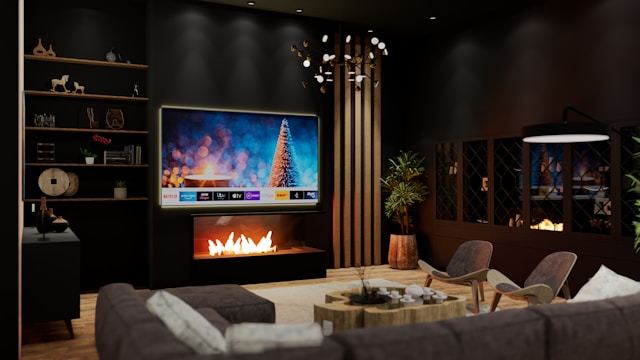There’s nothing quite like the magic of watching a movie on the big screen. But what if you could bring that cinematic experience into your own home? With a little planning and creativity, you can design a DIY home theater that fits your space, style, and budget. From choosing the right screen to setting up immersive sound, this guide will walk you through how to build a home theater that feels like your very own movie room.
Planning Your Space
Before buying equipment, the first step is to plan where your home theater will go. Not every space needs to be a dedicated room your living room, basement, or even a spare bedroom can work perfectly.
-
Room size: A larger room allows for bigger screens and more seating, but even smaller rooms can deliver an incredible experience.
-
Lighting: Choose a room with minimal natural light or use blackout curtains for daytime viewing.
-
Acoustics: Hard floors and bare walls can make sound bounce. Carpets, rugs, and curtains help absorb sound for better quality.
-
Budget: Decide how much you’re willing to spend. You can create a budget home theater for under $500 or go all out with premium upgrades.
Essential Equipment for a DIY Home Theater
The core of any home theater setup guide is the equipment. Here are the essentials:
Screen Options
-
Projector and screen: Ideal for a true cinematic feel. Affordable projectors paired with a DIY projector screen can create a theater-like setup.
-
Large-screen TV: A simpler option that provides excellent picture quality, especially if you already own a big TV.
Sound System
-
Soundbar: Affordable and easy to set up.
-
Surround sound system: Multiple speakers placed around the room for an immersive experience.
-
Bookshelf or tower speakers: Great for music lovers who also want quality movie audio.
Media Sources
-
Streaming devices: Roku, Apple TV, Amazon Fire Stick, or smart TVs for instant access to Netflix, Disney+, and more.
-
Blu-ray/DVD players: For those who prefer physical discs or want higher-quality playback.
Seating and Comfort
-
Recliners, couches, or even bean bags work well. The key is comfort you’ll be spending hours here.
Setting Up the Room
Once you have your essentials, it’s time to arrange the space for maximum enjoyment.
-
Screen placement: Position your TV or projector screen at eye level. The distance should be about 1.5–2.5 times the screen size.
-
Speaker setup: Place front speakers near the screen, rear speakers behind seating, and a subwoofer near the center for balanced bass.
-
Acoustic treatment: Use curtains, wall panels, or even bookshelves to reduce echo.
-
Lighting: Add LED strip lights, floor lamps, or dimmable smart bulbs to create a theater vibe.
-
Cable management: Hide wires with cable covers or run them along baseboards to keep the room clean.
Personalization and Extras
A DIY movie room is more than just a screen and speakers it’s about atmosphere.
-
Decor: Add framed movie posters, themed wall colors, or blackout curtains for an authentic cinema look.
-
Snack station: Set up a small cart or corner with popcorn, candy, and a mini-fridge for drinks.
-
Smart home integration: Control lighting, sound, and even curtains with smart assistants like Alexa or Google Home.
Budget-Friendly Tips
Creating a DIY home theater doesn’t have to break the bank. Here are some cost-saving ideas:
-
Buy refurbished or second-hand TVs and speakers.
-
Use a white wall or DIY projector screen instead of a store-bought one.
-
Repurpose existing furniture instead of buying new seating.
-
Add ambiance with inexpensive LED lights instead of costly theater lighting.
With a little creativity, budget home theater ideas can rival expensive setups.
Maintenance and Upgrades
To keep your home theater performing well:
-
Dust your projector, TV, and speakers regularly.
-
Update streaming apps and devices for the best performance.
-
Replace cables or upgrade sound systems as technology improves.
-
Consider upgrading seating or adding new speakers over time.
Conclusion
Learning how to build a home theater is easier than you might think. With careful planning, smart equipment choices, and creative DIY touches, you can transform any room into a personal cinema. Start with the essentials a screen, sound system, and comfortable seating and add extras as your budget allows.

